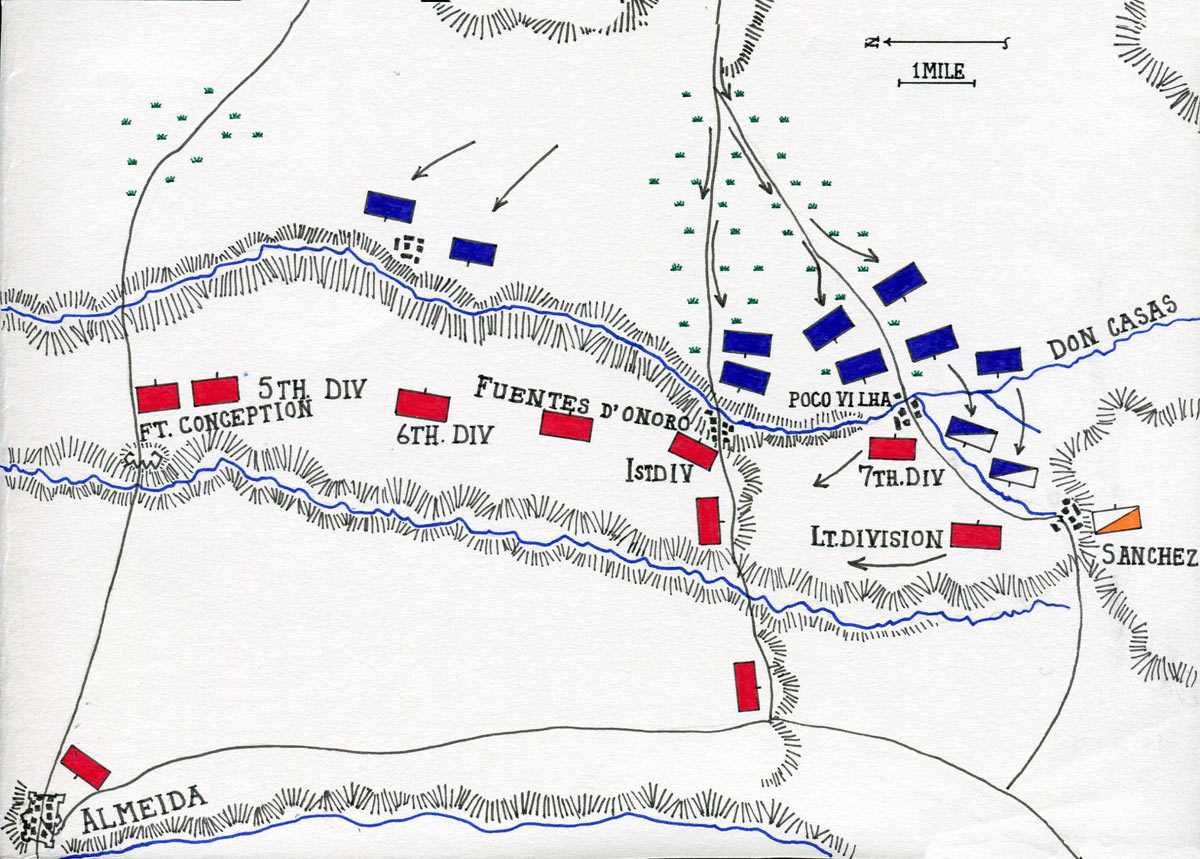| Army list based on the fight for the village of Fuentes de Oñoro. Wellington did not consider himself to be at his best. |
 | |
| Map of the Battle of Fuentes de Oñoro 3rd to 5th May 1811 in the Peninsular War: map by John Fawkes |
I have a new army idea, based on the Battle of Fuentes de Oñoro. Wellington deployed his army on a long ridge line. Quoting from British Battles.com - Battle of Fuentes de Oñoro:
With the 7th Division extracted, the Light Division marched back across the plain, a large force of French cavalry circling them, attempting to find an opportunity to charge home. The British regiments marched in square and the French shirked from the attack. Napier described this hazardous withdrawal, saying “there was not during the whole war a more perilous hour”.
Once the Light Division reached the high ground, Wellington’s flank was secure, with the 7th Division on the right and the British line resting on Fuentes de Oñoro.
Simultaneous with his assault on Poco Velha, Massena launched the French 6th Corps in a series of ferocious attacks on the village of Fuentes de Oñoro throughout 5th May.
Several British and Portuguese regiments from the 1st and 3rd Divisions took part in defending the village, which changed hands repeatedly.
At the high point of the assault, the French drove the British and Portuguese to the top of the village. Colonel Wallace counter attacked with his 88th and the 71st and 79th Highlanders, driving the French out of the village back across the Don Casas.
The French, their ammunition running low, refrained from further action.The first book I read about the Peninsula war was Sharpe's Battle which is based on the battle.
Accepting that he could not break through Wellington’s army to relieve Almeida, Massena withdrew to Ciudad Rodrigo.
Peninsularwar.org/ writes:
Grattan of the 1/88th, quoted in Oman, gave a vivid description of the scenes in the village:
"The town presented a shocking sight: our Highlanders lay dead in heaps, while the other regiments, though less remarkable in dress, were scarcely so in the number of their slain. The French grenadiers, with their immense caps and gaudy plumes, lay in piles of ten and twenty together - some dead, others wounded, with barely strength sufficient to move, their exhausted state and the weight of their cumbrous accoutrements making it impossible for them to crawl out of the dreadful fire of grape and round shot which the enemy poured into the town. The Highlanders had been driven to the churchyard at the very top of the village, and were fighting with the French grenadiers across the graves and tombstones."
No comments:
Post a Comment
Thank you for the comment on my blog! May your dice never desert you and your tactical abilities be as good as your posting is! Never stop posting.